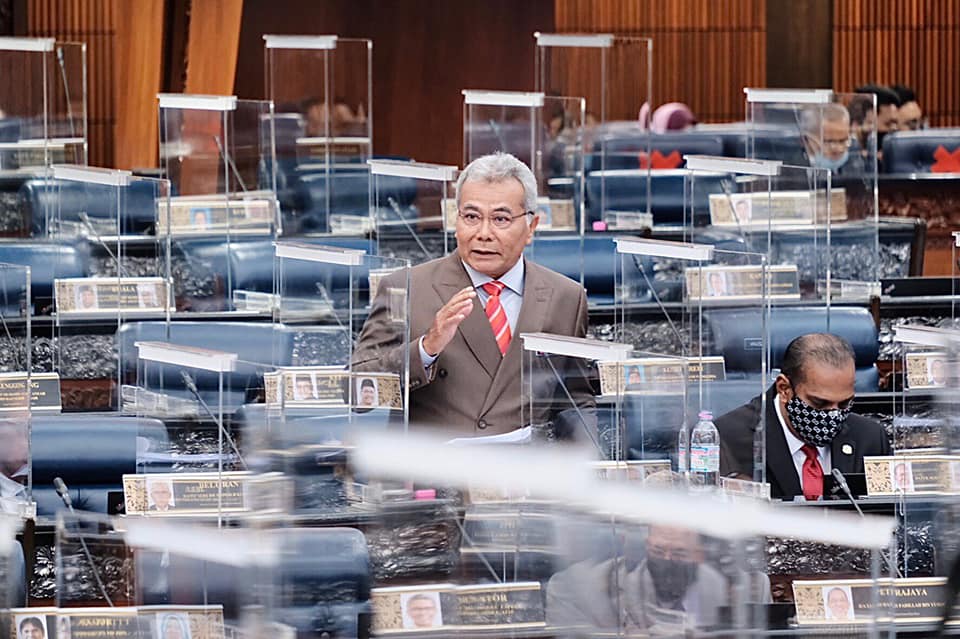KUALA LUMPUR, Nov 23 — The government may implement a Conditional Movement Control Order (CMCO) until the end of the year if Covid-19 cases continue rising, a minister said today.
Minister in the Prime Minister’s Department Redzuan Md Yusof said the CMCO — which has been imposed on the Klang Valley since October 14, and extended to certain states in the peninsula from November 9 — was based on the Ministry of Health’s (MOH) risk assessment, based on the total number of Covid-19 cases and the infectivity rate in various localities.
“The government will study the need to impose the CMCO until year end if there is an increase of cases,” Redzuan, the minister in charge of special functions, told the Dewan Rakyat during the Budget 2021 debate.
“At the same time, control measures through the CMCO must be taken to prevent and to reduce the number of Covid-19 cases to a minimal level where possible, or until zero cases.”
The government’s purported target of “zero” new cases through movement restrictions contradict public health experts, including from the World Health Organization that stress lockdowns do not eliminate Covid-19 and should not be used as a primary measure in managing the pandemic.
The National Security Council (NSC) lifted the CMCO on four states — Kedah, Melaka, Johor, and Terengganu — since November 21, except for certain districts like Kulim in Kedah, and Kota Tinggi and Mersing in Johor. Kelantan also went under movement restrictions from November 21 to December 6. A CMCO has not been imposed on Pahang and Perlis.
Health authorities have been officially reporting above 1,000 new Covid-19 cases almost every day for the past 10 days since November 13, with dips recorded only on two days: 660 cases on November 18 and 958 cases on November 20.
Although new Covid-19 cases dipped to single digits or even zero occasionally during the Recovery Movement Control Order (RMCO) period, it is doubtful if the official reports were true indicators of the situation, as Malaysia does not adopt widespread testing, choosing to focus instead on targeted testing on contacts of confirmed cases or certain high-risk groups.
Deputy Health Minister Dr Noor Azmi Ghazali told CodeBlue in an interview last week that even in targeted enhanced MCO (TEMCO) areas, not everyone is tested in those communities under lockdown; only about 10 per cent.
Even after five weeks of movement restrictions in Selangor, Kuala Lumpur, and Putrajaya since October 14, the Klang Valley has recorded a continuous rise of daily average Covid-19 cases each week. The CMCO generally prohibits inter-district and inter-state movements, except for work or emergency purposes. Schools have also been closed, while travel in cars is limited to three people, and dine-ins limited to four per table.
The Malaysian Institute of Economic Research (MIER) also tweeted Saturday that the Covid-19 test positivity rate in Malaysia was actually 5.07 per cent, according to the 14-day rolling average between October 30 and November 12, as the economic think tank pointed out that the 2 per cent positivity rate touted by MOH was actually a cumulative figure.
According to MIER, the 14-day rolling average test positivity rate in Malaysia had been slowly rising:
- 0.49 per cent (September 4-17)
- 0.86 per cent (September 18 – October 1)
- 2.63 per cent (October 2 – 15)
- 4.35 per cent (October 16 – 29)
- 5.07 per cent (October 30 – November 12)
“What KKM showed is the CUMULATIVE POSITIVITY RATE. The more important indicator is the 14-day average rate. We should be conducting mass testing at red zones and by that we can show if the positivity rate represents the actual state of the outbreak in this third wave,” MIER tweeted.
“The 14D-RA of 5.07 raises queries since if (a) 14D-RA is >5% and we are testing enough hence the real state of the outbreak is that it is not under control, or (b) 14D-RA is >5% because we are not testing enough so if we do test more the positivity rate would be lower.”
Essentially, taking the cumulative test positivity rate from the beginning of the Covid-19 epidemic in Malaysia excludes the possibility that people who tested negative months ago may have contracted the virus recently.
Covid-19 tests do not lend protection; they only check if one is infected with the virus at the exact minute they took the test. People can still get infected at any time after getting tested.








